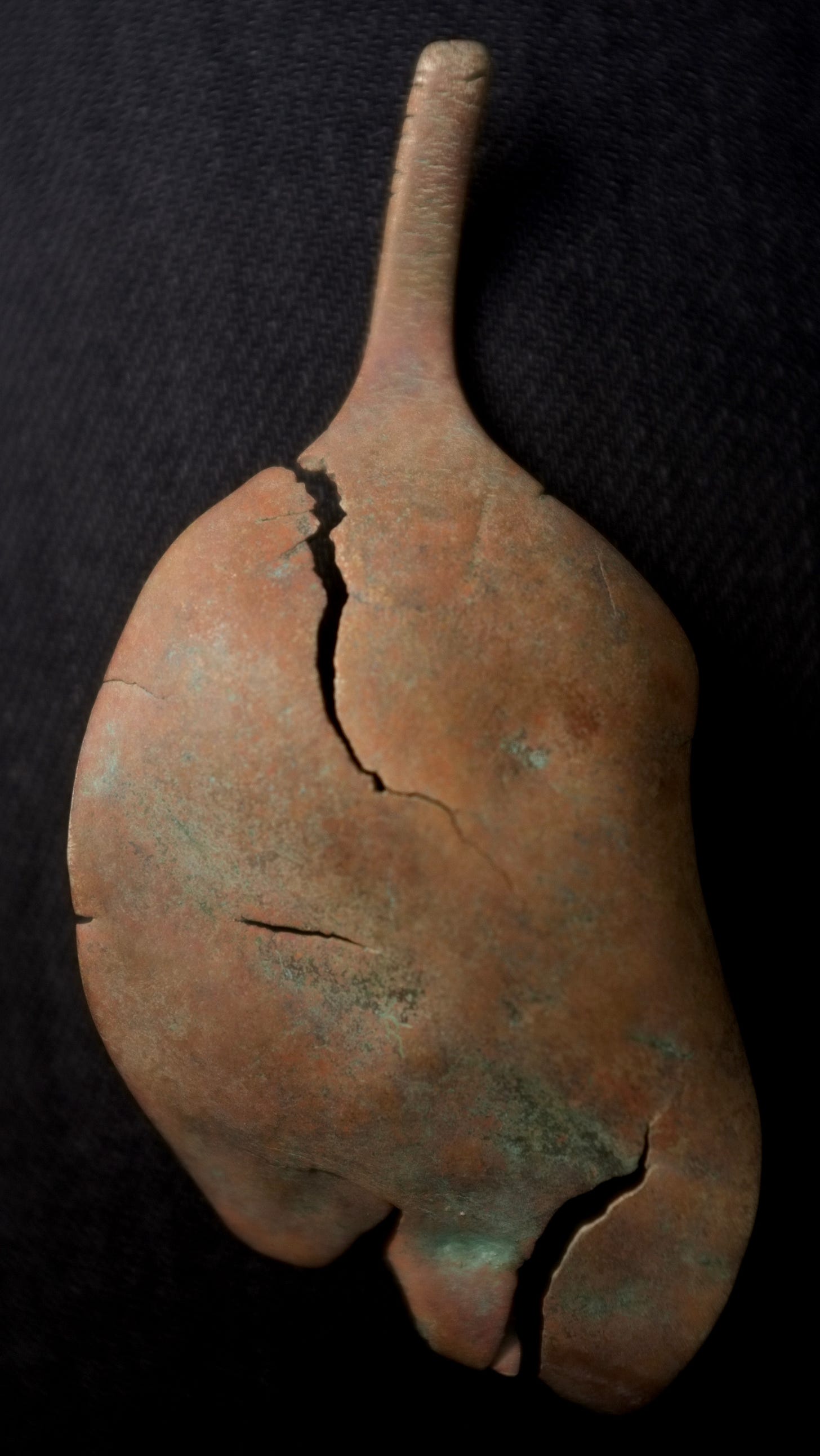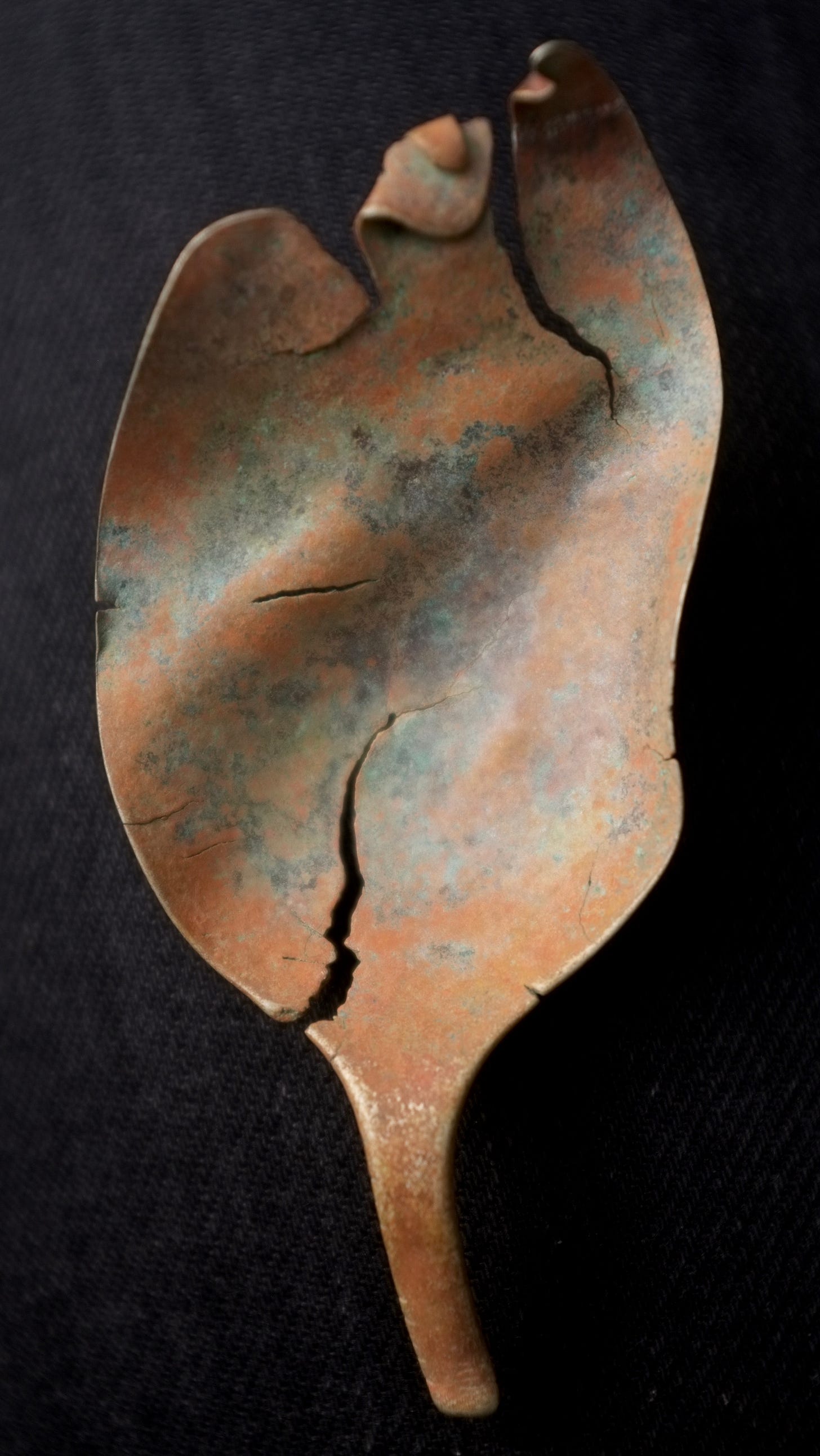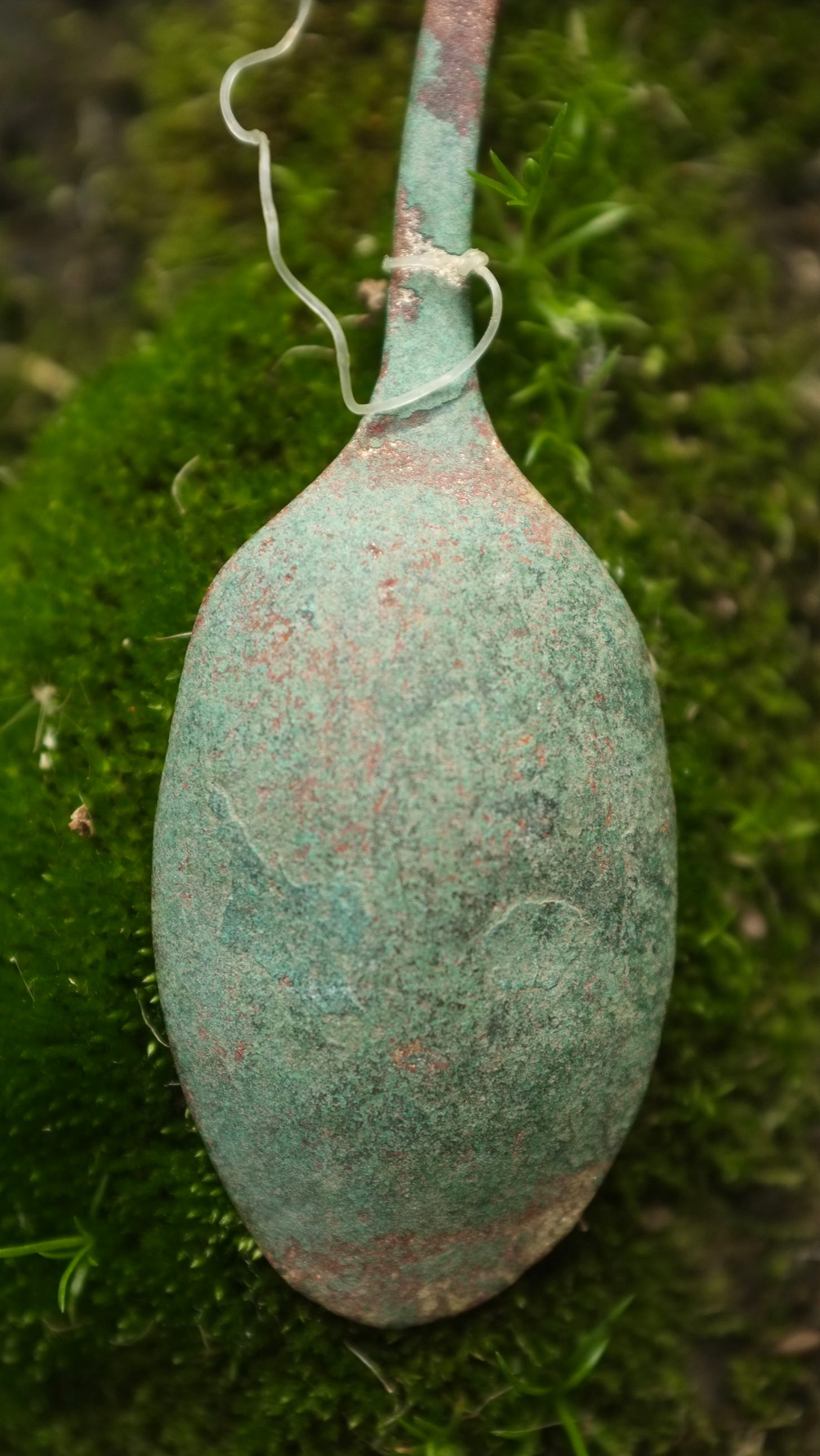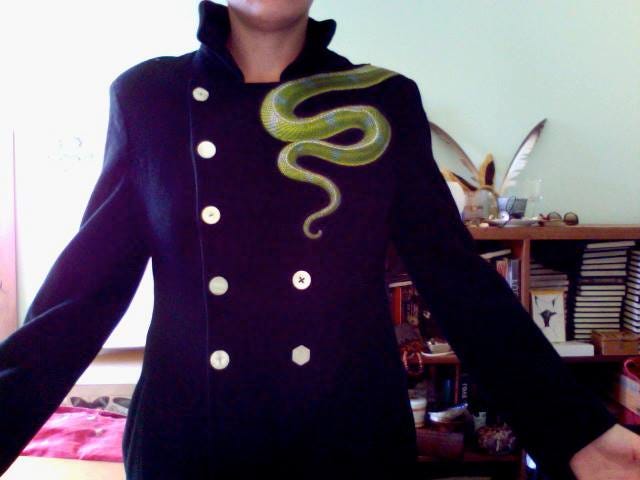Andrew Marvell: "The Mind, that Ocean where each kind Does streight its own resemblance find; Yet it creates, transcending these, Far other Worlds, and other Seas; Annihilating all that's made To a green Thought in a green Shade."
Metal and salt. Time and weight, the crush and grind of keeping company with stone. Walking up the stream bank talking with Ben1 I found this munted piece of metal that was once a spoon’s bowl. Spoons are a charming form— a small vessel, a pool, a womb.
(What is a teaspoon, for instance? A modest domestic measure. Sugar, baking powder, medicine, feeding a little person.)
I’d found this one on the 9th of March:

It’s sea salt reacting with copper that makes the beautiful green / blue colouration. The word verdigris is said to mean verte de Grece, the green of Greece.2 (Maybe because of ancient bronze statues, green-crusted when they are pulled from the earth or the Aegean?)
In other languages, verdigris is called 'green of Spain': German grünspan, Danish spanskgrönt,3 Dutch spaansch-groen— from the Medieval Latin viride Hispanum.
(An alternative etymology is from the Old French verte grez, meaning vert d'aigre, 'green [made by action of] vinegar'- one uses vinegar and salt together to induce this patina.)
Here are the spoon-backs:

Why are they so beautiful? Wabi-sabi (侘寂).4 Specifically the sabi half of the portmanteau, which refers to the ravages of time: wear, erosion, damage, rust. The sea is a ruthless transmogrifier. Nature engraves beautiful chaos onto all objects.
(I also found this small round bathroom tile, which I discovered is called a penny tile: I picked it up because of the tonal harmony with the spoon: mint chocolate.)
A few weeks ago Kelly found a set of six big heavy spoons in the op shop for 50 cents each: jewellery fuel. But she came in from her workshop very disappointed, and showed us the cut where she’d sawed the handle off the bowl. “Look at this— it’s solid silver! Now I can’t use them.”
About the necessity of not showing works-in-progress to anyone; and on a related note, how annoying it is that people feel the compulsion to take phone-photos of everything all the time. ([Hashtag] Society of Obstreperous Curmudgeons)
This surprised me. I thought it was ‘green-grey’, like ambergris (from Old French ambre gris, ‘grey amber’. Grey amber as distinct from yellow amber— Baltic amber: both are found washed up on seashores. More on ambergris anon.)
There is also an etymological link between verdigris and Morelia viridis, the Green tree python, whom I wore over my shoulder for many years on my first Wizard coat:
(Viridis means a green that is fresh, verdant, sprouting, vigorous.)
Eliza: “Spanksgrönt is my new favourite word.”
Me: “It's the sound one makes when one is struggling into one's shapewear.”
I’ll get me coat…









